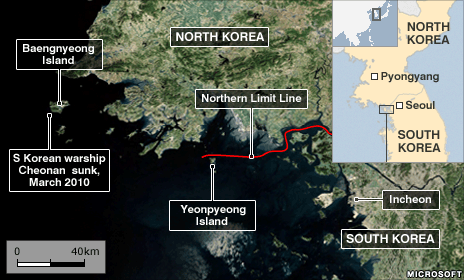South Korea is marking the anniversary of a deadly North Korean attack on a border island, amid further threats from its northern neighbour.

Two civilians and two marines were killed when North Korea shelled Yeonpyeong island on 23 November 2010.
A memorial hall will be opened on the island and military exercise held.
North Korea has warned it will respond to any “provocation”, saying it regretted not sending the island “to the bottom of the sea”.
“It is the steadfast will of the service personnel not to miss the opportunity to do so if the warmongers perpetrate another provocation,” an unidentified army spokesman was quoted as saying by state news agency KCNA.
The South Korean drills will involve marine and naval forces but do not include live-fire exercises. North Korea said the attack in 2010 was in response to a live-fire exercise that led to shells falling in its territorial waters.
Yeonpyeong island, home to a military base and a small civilian population, lies 3km (2 miles) from the disputed maritime border in the Yellow Sea and 12km from the North Korean coast.
It has been the scene of inter-Korean naval clashes over the years.
The Cheonan, a South Korean warship, sank in the disputed border area in March 2010 with the loss of 46 lives. Seoul says Pyongyang sank the ship – something North Korea denies.






